
Gripping Story
It’s around this time of year that the Edgar Allan Poe books are taken off the shelf and dusted off. A favorite of course is “The Raven.” But did you know that the titular corvid had a real-world inspiration?
Charles Dickens had a pet raven named Grip, whom he immortalized as a character in his 1841 novel Barnaby Rudge. As Atlas Obscura tells us, Poe—who was primarily a literary critic for most of his career—reviewed Dickens’ novel for Graham’s Magazine, writing that “[the raven’s] croaking might have been prophetically heard in the course of the drama.” Poe wrote his own “Raven” not long afterward. It is not likely that Grip ever said “Nevermore”—but you never know.
And if you are ever in Philadelphia, you can actually see the original Grip the Raven. After the bird died in 1841, Dickens had him professionally stuffed and mounted, and somehow Grip ended up in the Free Library of Philadelphia Rare Books Department—along with a collection of Poe and Dickens original books.
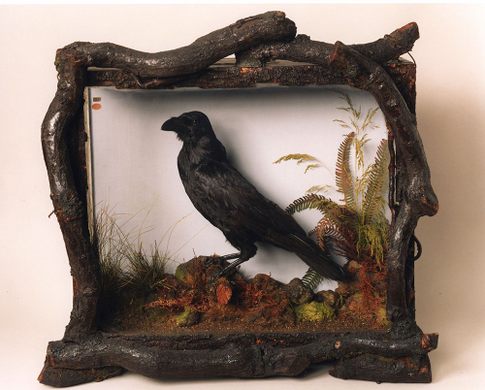
Tear a MASU
The holidays are fast approaching, and if you in the habit of giving gifts, you will likely be in the market for wrapping paper. Via Print magazine, a company called MASU has developed a line of sustainable wrapping paper, designed to be 100% recyclable. Founded by Libby Hampel, she…
began her design journey studying and experimenting with surface pattern designs like fabric and wallpaper and eventually transitioned into textile design. She spent many years developing her trademark design style and sense of color that, coupled with an eco-friendly profile, has won the MASU brand a devoted following.
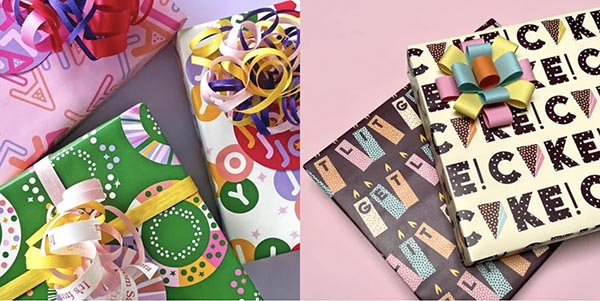
In keeping with Hampel’s personal ethics and principles, MASU sources only recyclable and sustainable materials throughout every facet of the production process – from packaging and shipping containers to the paper itself. For its key element, MASU relies upon the New Hampshire-based and family-owned Monadnock Paper Mills. The over 200-year-old mill is the oldest continuously operating paper mill in the U.S., a longevity matched by the company’s deep commitment to sustainability. Monadnock’s Astrolite 100 PC Velvet coated paper is made of 100% PCW recycled content and is ideal for coated fine text and cover applications. Hampel found that the ink doesn’t absorb into the high-quality coating of the paper, making her designs and colors really pop.
The company name, by the way, comes from two Japanese words related to giving: agemasu and kuremasu. Agemasu refers to giving to someone, and kuremasu refers to someone giving to you.
Pearl Drops
Nurdles. Tiny plastic pellets used as the basis of many plastic materials—and an environmental scourge. However, a Swiss company is developing a paper-based alternative to plastic nurdles for various kinds of injection-molding applications. Via Core77, the Model Company (it’s a family-owned business and the family name is Model) has developed “Paper-Pearls,” nurdle-like pellets derived from wood fibers used in the papermaking process—including too-short fibers that are incompatible with papermaking and would otherwise go to waste.
These Paper-Pearls are combined with bioplastics, and injection-molded by German manufacturer Arburg's machines. "It can be used with conventional injection moulding machines and tools," the company writes, "so that [changing over] is as easy as possible."
… "While traditional plastic is laboriously extracted from petroleum, paper fibers are the basis of our Paper-Pearls – a much cheaper raw material."
Objects that have been injection-molded using Paper-Pearls include a set of checkers:
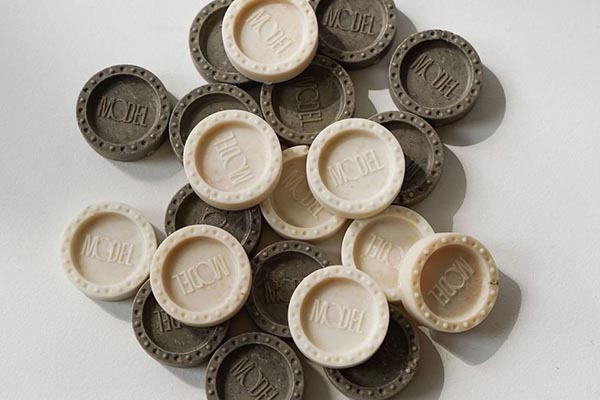
Development is ongoing. The company's ultimate goal is for items molded with Paper-Pearls to become recyclable “in the paper cycle,” as opposed to in the plastic cycle. But they’re not there yet.
Pretty cool.
Visionary
A number of research projects have been undertaken as of late to help improve the reading experience for people with low vision—in particular, how typography can be tweaked to make materials more readable. Some initiatives include Applied Design Works’ collaboration with the Braille Institute to develop Atkinson Hyperlegible in 2021 and Typotheque’s recent Zed typeface.
More recently, via Print magazine, Pablo Navarlaz’s design degree project, Frecuencias Divergentes, is intended to “improve the reading experience for people with low vision through typography.” Part of his mission is to address the fact that different individuals have different vision challenges, whereas prior attempts have been premised on a one-size-fits-all approach.
What began as a question for Navarlaz—Could I create a typeface that could better leverage individual capabilities?— soon turned into a deep research exercise. He combed through findings from two centuries of legibility studies but found a lack of consensus, contradictory results, and missing typography expertise. “There was a lot of chaos within the research,” said Navarlaz.
Part of the problem is defining what “legibility” is.
“I also noticed that there is always an attempt to standardize the term legibility as if there were a typeface with superior legibility and configuration,” explained Navarlaz. “This is a mistake because each person has a different background, different visual conditions, and different environments where they perform best, and we cannot assume that what works best for the majority should be the standard, as this would marginalize many people.”
So he dove in.
He started with variable typeface as a baseline, to which he explored classic variables (weight, width, and contrast) because he said, “They are the main variables that modify the relationship between black and white (we don’t just read the “black” but also the white, the paper).” To the three classic variables, he added in x-height (a key factor for legibility, generally). Navarlaz also looked at Dwiggins’ “m-formula,” being interested in the late designer’s work. (Dwiggins posited that flat and angular planes were more expressive in smaller use cases than their curved counterparts.)
The first result of his research was a typeface called Ivy Flex which, he admits, “is not the most legible typeface ever designed.”
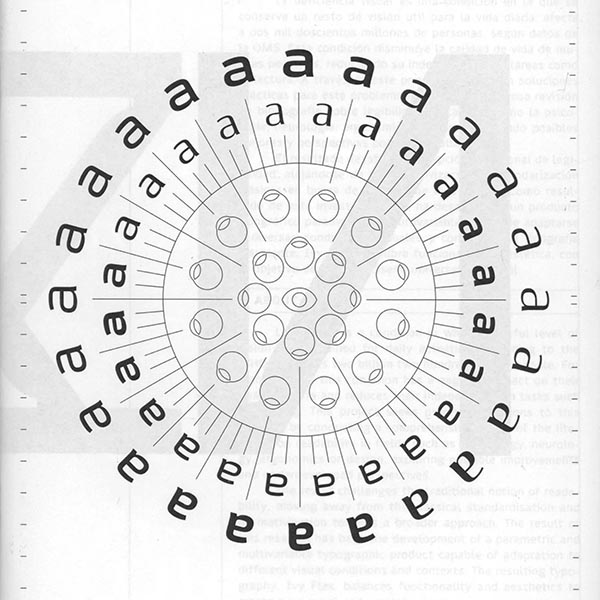
But then that isn’t necessarily the point.
“I believe the project helps to raise awareness and clarify certain issues, warn about others, and propose alternatives. The methodologies I propose are just the beginning, and I would like to see more people working on and exploring the subject, as it has many possibilities and great potential to help many people.”
Hot Deco
Wall décor is a hot application area these days, and nowhere more so than in Scotland, where wallpaper is literally hot. Indeed, via Boing Boing, researchers at the University of Glasgow in Scotland have developed electric wallpaper that can be used to heat homes.
Electric wallpaper is a thin surface powered by electricity. It consists of strips of copper and graphene
Yay!
and releases infrared radiation that can warm the house without releasing any emissions. Electricity for the wallpaper can be sourced from offshore wind farms, making it a clean heating source.
And it’s not just for walls, but ceilings as well.
The wallpaper can be fixed to the ceiling without much hassle, and the place can start warming in about three minutes when initiated. More importantly, the warmth provided is free of combustion fumes, which typically deteriorate the air quality inside homes.
It is currently being tested in in 12 tenement properties in Glasgow to assess its effectiveness.
Kindling Color
It took a couple decades, but Amazon is finally releasing a color E Ink Kindle called the Called the Colorsoft Signature Edition. It features a 7-in. Colorsoft display that is “high-contrast and easy on the eyes, with paper-like color that brings covers and content to life.” They also claim that a single charge can last up to eight weeks (obviously your mileage will vary.)
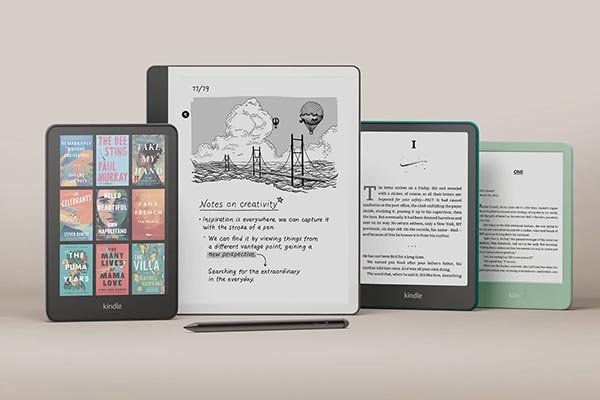
Nice selection. By the way, Paul Murray’s The Bee Sting? The Around the Web Bunker Book Club highly recommends it. Tana French’s The Hunter? Not so much.
Anyway, a steal at $280. Available in November.
Passing the Bar
Barcodes. A ubiquitous feature of modern life, and we dare say no modern retailer could survive without them. (Nothing holds up a supermarket line like a barcode that doesn’t work.) But it took some convincing to get anyone to adopt the barcode—and to convince some that it was not (literally) the work of the Antichrist.
The BBC has an interesting history of the barcode. Although first patented in 1949, it wasn’t until 1969 that anyone had an idea for a commercial use for it. Paul McEnroe was an engineer with IBM and he and his team envisioned—accurately—a supermarket of the future where, thanks to cashiers scanning codes with a laser, shoppers could check out much more quickly. They hit a roadblock, though. Not technology, but lawyers.
Their fear was “laser suicide”. What if people intentionally injured their eyes with the scanners and then sued IBM? What if supermarket staff went blind?
Since the laser was a scant half-milliwatt, there was no real chance of that, but McEnroe got a nearby lab to run tests on a half dozen rhesus monkeys. (OK, zapping monkeys in the eyes with a laser sounds a bit cruel—why not use the lawyers?—but they were unharmed, as McEnroe knew they would be.) The results appeased the lawyers, and that’s why we are able to use checkout scanners today. (One wrinkle is that the lab sent McEnroe the monkeys, who ended up donating them to a zoo where they could happily go about trying to type all the works of Shakespeare.)
Alongside the monkeys, each human member of McEnroe’s team at IBM also deserves credit for the Universal Product Code (UPC), as their version of the barcode became formally known. Among their number was Joe Woodland, the engineer who dreamed up the early concept behind barcodes decades earlier, after drawing lines in the sand on a beach. It was he and another engineer who made the application to patent the fundamental idea for barcodes back in October 1949.
Crucially, George Laurer and other members of the IBM team then took this pre-existing proposal for barcode-style markings and developed them into a neat rectangle of black, vertical lines corresponding to a number that could uniquely identify any supermarket item imaginable. From tins of soup to boxes of cereal or packets of spaghetti. The grocery industry formally adopted the UPC in 1973 and the first product bearing one was scanned at Marsh Supermarket in Ohio in 1974. From there, it conquered the planet.
It’s not actually the varying thickness of the vertical lines on a bar code that is the crucial element; if the printer printing the code laid down too much ink, the code would have been unreadable. Instead, it was the distance between the leading edge of one line and the leading edge of the line next to it that contains the code.
In other words, the space between the lines, which was more reflective and easier to pick up by the scanner. That way, it didn't matter if the label printer had too much ink and drew lines that were thicker than intended – the scan would still work, pretty much every time.
The advent of barcodes was not without controversy. Customers protested about not having the price stamped on an item, and labor unions feared (correctly, as it turned out) that the technology would be used to eliminate supermarket jobs. And some thought them literally evil.
In 2023, Jordan Frith, a professor of communication at Clemson University in South Carolina, published a book about the history of barcodes. During his research, he found a 1975 article in a publication called Gospel Call that suggested barcodes could be “the Mark of the Beast” – a reference to a biblical prophecy from the Book of Revelation about the end of the world. The New Testament passage in question refers to a beast – sometimes interpreted as the Antichrist – that forces every person to be marked on their right hand or forehead. In the prophecy, only those who accept such a mark are allowed to buy or sell.
It was a “theory” that persisted for quite a while.
A 1982 book called The New Money System by evangelical writer Mary Stewart Relfe further popularised the supposed connection between UPC barcodes and the Mark of the Beast after she claimed the number 666 was "hidden" within the lines at either end and the middle of each barcode.
It’s still not uncommon today.
McEnroe says he is aware of some of these strange beliefs around barcodes. “It’s not something I would be prone to think,” he says, rather diplomatically. Frith makes another point: “It’s kind of strange to imagine a bunch of grocery executives leading the way for the apocalypse.”
Well…
And as we all know barcodes paved the way for QR codes—which can be “evil,” but not in a Satanic way.
Because scanning a QR code with your phone can direct your device to a malicious website, for example, QR codes have occasionally been deployed by hackers. The UK's National Cyber Security Centre has warned members of the public to be wary about QR codes. Drivers in several English towns have also been warned about a scam where fake QR codes were stuck to car parking machines in an attempt to steal money from unwitting motorists. One code used in car parks in Leicester was even linked to Russia.
And if you ever bought Mad magazine in the 1970s after the advent of the barcode, you know every issue used to make a unique joke about it.
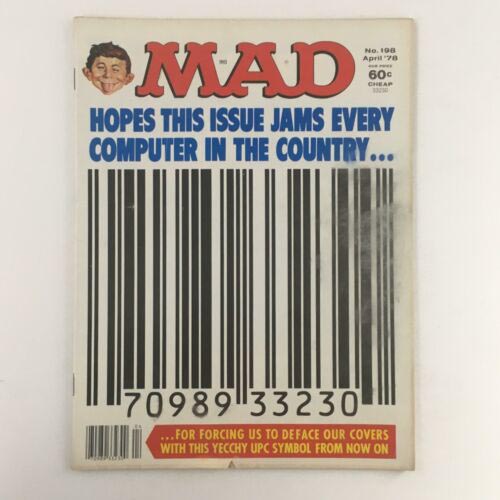
Graphene Is Masking Up
Was it a good week for graphene news? It’s always a good week for graphene news! Increasing demand for graphene-based surgical masks. From (who else?) Graphene-Info:
As previously announced in July 2024, the Company [Zentek] embarked on a Canada-wide sampling program for dental professionals facilitated by Henry Schein Inc. that saw ZenGUARD™ Antimicrobial Surgical Masks included in product shipments to Henry Schein customers across Canada. As a result of this program, the Company is now reportedly seeing increased demand from Henry Schein, the world’s largest provider of health care solutions to office-based dental and medical practitioners with a presence in 33 countries.
…“In addition to better protection against infectious agents, ZenGUARD™ Antimicrobial Surgical Masks are also proven to eliminate 99.9% of bacteria, which can collect on the skin when wearing a surgical mask for extended periods and cause acne. We believe this unique value proposition will continue to drive increased demand in the dental market and is a very natural fit for the beauty industry as well.
Stop, Dave
An iconic moment in film history comes at the end of Stanley Kubrick’s 2001: A Space Odyssey, where (not a spoiler, surely) Dave Bowman is deactivating killer computer HAL by removing its brain and it starts singing an increasingly deteriorating rendition of “Daisy Bell.” As it turns out, Kubrick was inspired for that scene by a 1968 Bell Labs documentary called “The Incredible Machine,” a showcase of then-cutting-edge developments in computer graphics and other digital technologies that today we live and work with nearly every moment of every day. Says Boing Boing:
At the heart of the documentary is the “Graphic 1” computer system, which represented a revolutionary approach to design and engineering. As the narrator explains, “It’s a new way of working out abstract problems in the age-old medium of drawings and designs, which explains why the technique is called computer graphics.”
It demonstrates early experiments with computer animation, digital art and design, and computerized music.
For the “Daisy” bit, fast forward to about the 10:31 mark.
It doesn’t indicate who the narrator is, but it sounds an awful lot like Orson Welles. Also, the autocaptioning has been done by a particularly insane AI bot, by the looks of it.
Danse Macabre
Here’s what you need to put out on your lawn for Thursday: a miniature skeleton orchestra. Via Laughing Squid:
Italian artist Amedeo Capelli of Stoccafisso Design created a wonderfully macabre orchestra made up of skeleton musicians. Like his other creations, this orchestra was hand carved and attached by wire, hooks, wooden gears, and cams to a handle that coaxed each “musician” into movement, making the orchestra look as if they were playing Dies Irae by Giuseppe Verdi.
Pretty neat.
Pah! YouTube won’t let us embed it.
Ringing True
People who like to run outdoors often run (as it were) into the same problem that bicyclists often do: coming up on someone from behind—be they a lone pedestrian immersed in their own Ear Bud universe, or the dogwalkers with the eight-foot garrottes leashes that stretch across a sidewalk or path, seemingly used to keep one’s dog as far as possible from them. Anyway, the runner usually tries to alert the person to their presence by shuffling one’s feet, making clopping noises, or, ultimately, shouting “on your right!” before getting increasingly profane.
Bicyclists often use a bell, and, via Core77, we were intrigued to see that Oregon-based inventor Kevin John Nadolny has come up with a simple but ingenious device: the Runbell.
“Runbell is extremely loud and can easily be heard from more than 30 feet away. People have plenty of time to react. They can move left or right and you can still pass with ease. Dog walkers have time to calm their dog and pull them close.”
Or at least retract the damn leash.
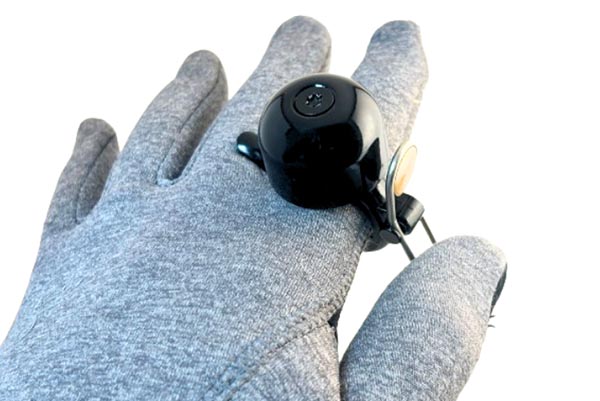
The made-in-Japan Runbell features a brass hammer that will never rust. The main casting is stainless steel, and the product comes with four silicone inserts that you can use to find the right fit, whether you're bare-handed or wearing gloves.
It has been successfully Kickstartered, with 21 days left to pledge as of today. A steal at $35.
They’re Crackers, All Right
They’re kidding, right? Goldfish—the snack cracker—is changing its name to “Chilean Sea Bass.” Says Food & Wine CNN:
The Pepperidge Farm snack brand is tweaking its name for a limited time to “Chilean Sea Bass,” a more grown-up title, the Campbell’s Company announced Wednesday. It’s part of a strategy to attract adults and reestablish its relevance amid a broader decline in snacking following a pandemic peak.
We’re not sure that the post-COVID decline in snacking had anything to do with what snacks were called or how they were perceived. We’re just out doing stuff now.
Despite rebranding as a popular seafood menu item, the recipe and appearance of the snack aren’t changing. Goldfish explained in a press release that the “much more adult” name is to “reinforce that Goldfish crackers are not just for kids,” pointing to the growth of trends popularized by Gen Z and Millennials on TikTok such as making “girl dinners.”
Oh, Lord.
Actually, it turns out that Goldfish was originally launched in 1962 as a bar snack. Somehow, they turned it into a kids’ snack.
Although snacking has declined since a pandemic-induced boom, it still remains popular for cash-strapped adults. “There is this broader consumer behavior around the idea of ‘permissible indulgence’ where adults allow themselves to indulge in nostalgic or fun treats,” Rosen told CNN, making Goldfish an ideal candidate for this trend.
Looking at the packaging, we’re not sure it was the name that was the problem.
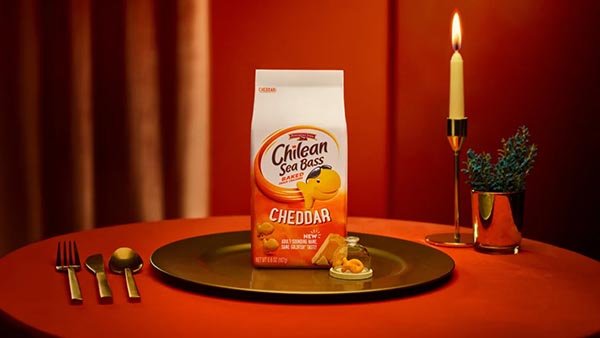
No indication on how “limited” the name change will be.
This Week in Printing, Publishing, and Media History
October 21
1772: English poet, philosopher, and critic Samuel Taylor Coleridge born.
1833: Swedish chemist and engineer, inventor of dynamite and founder of the Nobel Prize Alfred Nobel born.
1879: Thomas Edison applies for a patent for his design for an incandescent light bulb.
1914: American mathematician, cryptographer, and author Martin Gardner born.
1929: American author and critic Ursula K. Le Guin born.
1940: The first edition of the Ernest Hemingway novel For Whom the Bell Tolls is published.
1959: In New York City, the Solomon R. Guggenheim Museum opens to the public.
1969: American novelist and poet Jack Kerouac dies (b. 1922).
1983: The meter is defined as the distance light travels in a vacuum in 1/299,792,458 of a second.
October 22
1565: French book collector Jean Grolier de Servières dies (b. 1479).
1875: First telegraphic connection in Argentina.
1879: Using a filament of carbonized thread, Thomas Edison tests the first practical electric incandescent light bulb (it lasted 13½ hours before burning out).
1883: The Metropolitan Opera House in New York City opens with a performance of Gounod’s Faust.
1884: The International Meridian Conference designates the Royal Observatory, Greenwich as the world's prime meridian.
1964: Hell is other awards: Jean-Paul Sartre is awarded the Nobel Prize in Literature, but turns down the honor.
October 23
1959: "Weird Al" Yankovic born.
2012: After 38 years, the world's first teletext service (BBC's Ceefax) ceases broadcast due to Northern Ireland completing the digital switchover.
October 24
1861: The first transcontinental telegraph line across the United States is completed.
1911: Orville Wright remains in the air nine minutes and 45 seconds in a glider at Kill Devil Hills, N.C.
1946: A camera on board the V-2 No. 13 rocket takes the first photograph of earth from outer space.
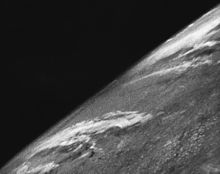
1991: American captain, screenwriter, and producer, creator of Star Trek, Gene Roddenberry dies (b. 1921).
2003: The Concorde makes its last commercial flight.
October 25
1977: Digital Equipment Corporation releases OpenVMS V1.0.
2001: Microsoft releases Windows XP, becoming one of Microsoft’s most successful operating systems.
October 26
1825: The Erie Canal opens, allowing direct passage from the Hudson River to Lake Erie.
1861: The Pony Express officially ceases operations.
1892: Ida B. Wells publishes Southern Horrors: Lynch Law in All Its Phases.
1946: Puerto Rican actress and author Holly Woodlawn born to walk on the wild side.
1958: Pan American Airways makes the first commercial flight of the Boeing 707 from New York City to Paris.
October 27
1858: Theodore Roosevelt born.
1904: The first underground New York City Subway line opens, later designated as the IRT Broadway–Seventh Avenue Line.
1914: Welsh poet and author Dylan Thomas born.
1923: American painter and sculptor Roy Lichtenstein born.
1932: American poet, novelist, and short story writer Sylvia Plath born.
1939: English actor, comedian, screenwriter, and producer John Cleese born.
1977: American journalist and author James M. Cain dies (b. 1892).
2004: The Boston Red Sox defeat the St. Louis Cardinals to win their first World Series in 86 years.














